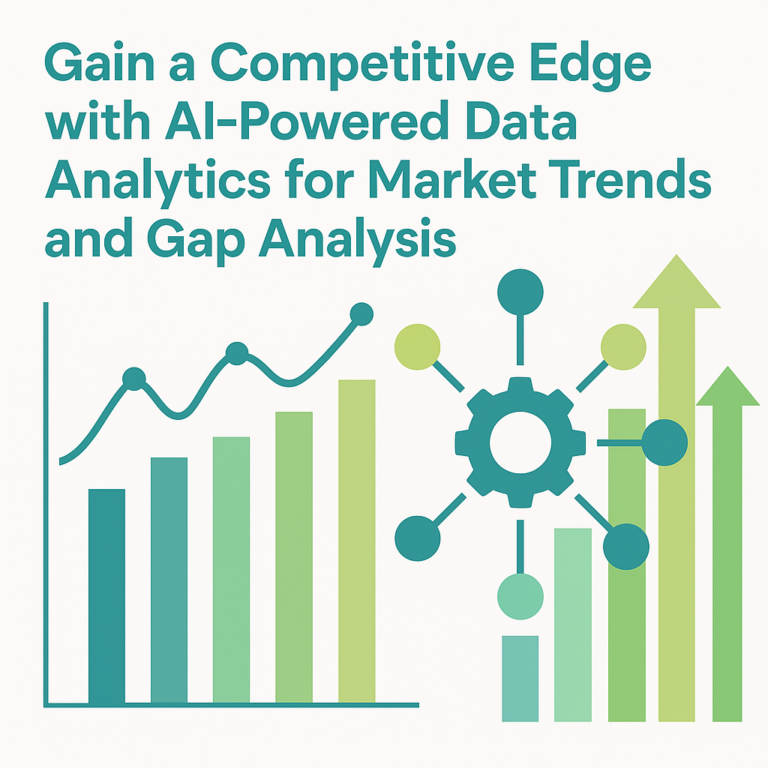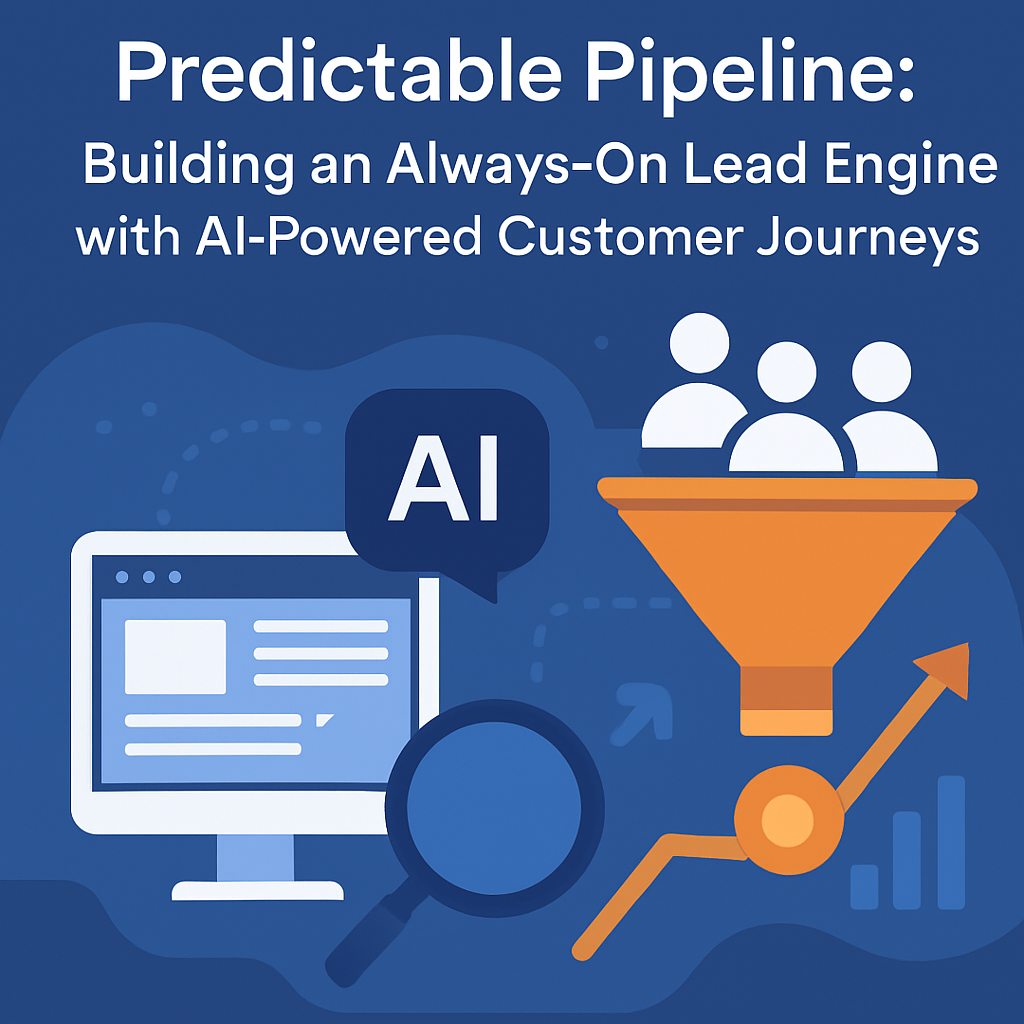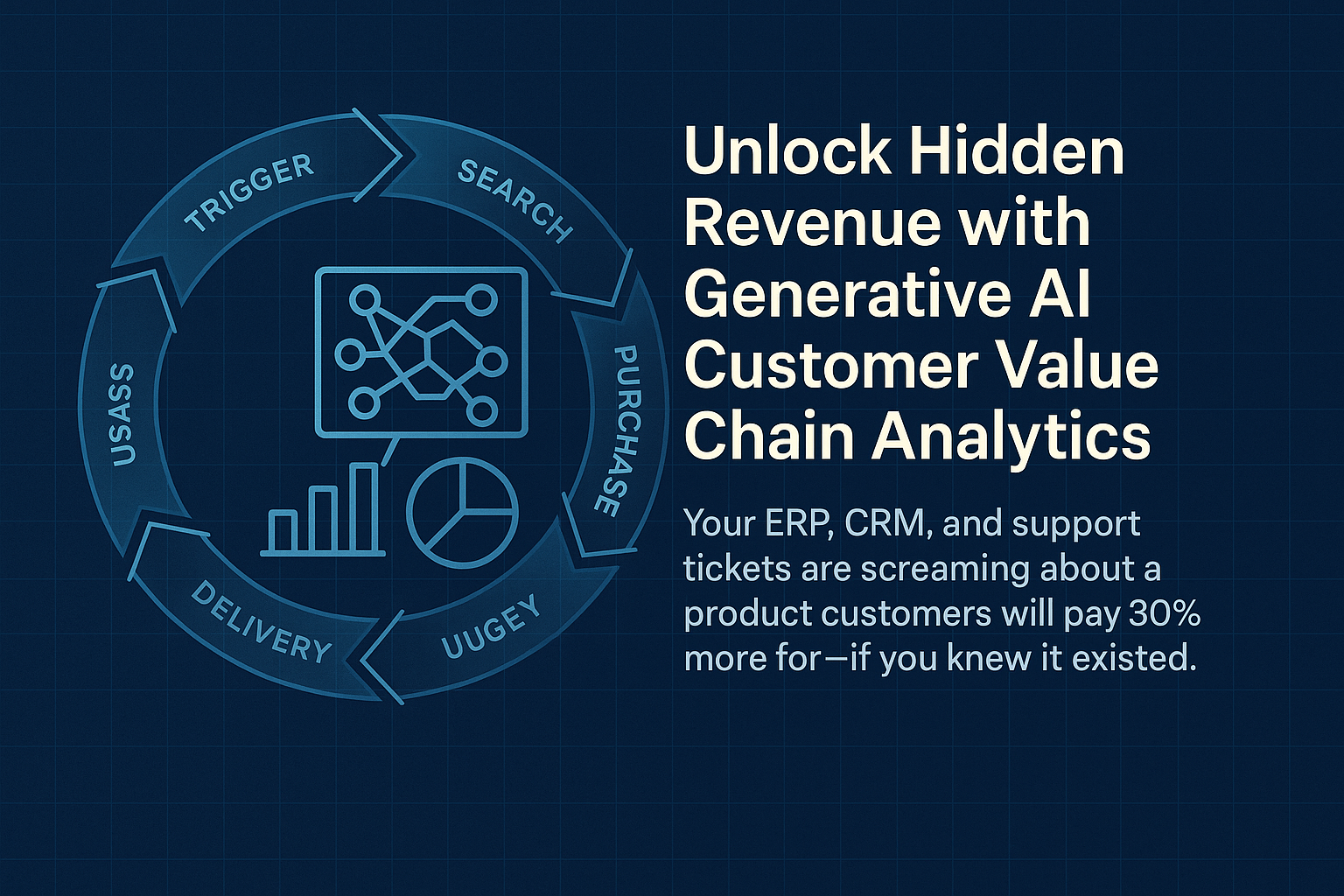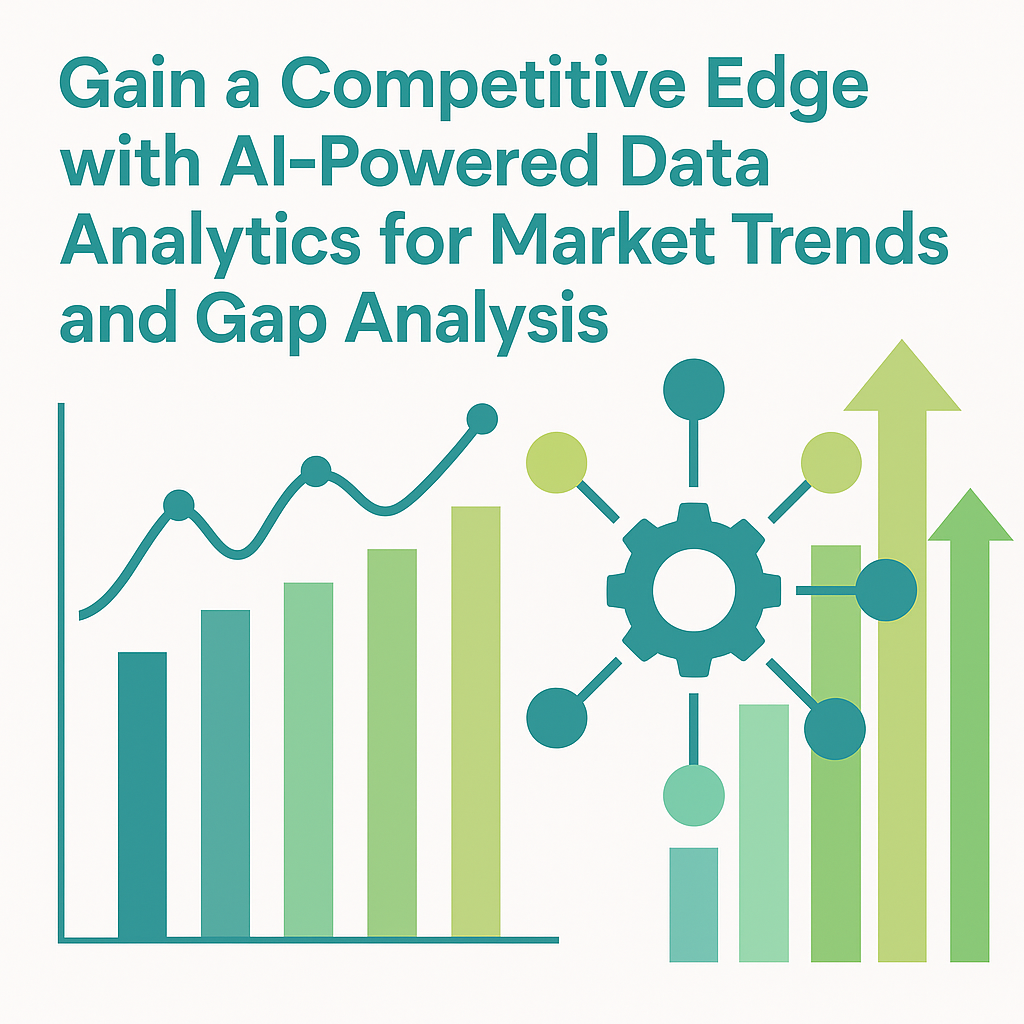Forward-thinking companies are always looking for ways to sharpen their competitive edge. Leveraging AI-powered data analytics for market trends gives them the insight to act decisively and stay ahead of shifting market dynamics. If you’re exploring how to anticipate industry shifts and uncover gaps your competitors haven’t spotted, you’re in the right place.
AI-powered data analytics for market trends enables businesses to:
1) identify emerging consumer behaviors
2) reveal underserved or untapped market segments
3) anticipate shifts in demand
4) align offerings with evolving needs
These insights help companies innovate and grow in uncontested market spaces.
Key Takeaways:
- Stop watching competitors—start listening to the market through AI-driven insights.
- Use AI to detect sentiment, forecast trends, and fill hidden gaps in your customer experience.
- Integrate AI insights into everyday decision-making for marketing, sales, and product strategy.
- Begin with focused projects to build AI confidence and ROI.
Want to dive deeper into how this technology can elevate your market strategy? Let’s explore practical applications, examples, and implementation tips that can transform your customer journey and position your business ahead of the curve.
Table of Contents
Discover Opportunities Beyond the Competition
Instead of competing in saturated markets, more businesses are shifting toward a Blue Ocean Strategy—creating new demand in uncontested space. AI supports this approach by identifying emerging patterns that human analysts often overlook.
A professional services firm used AI to analyze content interactions and search behavior across its digital platforms. It identified a consistent pattern: mid-sized companies were frequently searching for DIY growth strategy tools—but no tailored services existed for this niche. The firm created an on-demand strategic coaching model powered by AI-generated insights, launching a new offering in a space its competitors hadn’t addressed. This positioned them in a new, uncontested market category tailored to self-driven business leaders.
When you stop looking at what your competitors are doing and start listening to what your market is asking for, you unlock genuine innovation.
How AI-Powered Data Analytics for Market Trends Works
So, what exactly is AI-powered data analytics for market trends? At its core, it’s a process that uses machine learning and natural language processing (NLP) to analyze large volumes of structured and unstructured data. From website interactions and CRM notes to online reviews and market research reports, AI distills complex information into digestible insights.
Rather than relying on static historical reports, AI continuously updates your understanding of your market. Using ai automation for data gathering it tracks shifting customer sentiment, identifies new behavior patterns, and even detects anomalies that may signal emerging demand—all in real time.
This capability allows businesses to act on insight, not instinct.
How AI-Powered Data Analytics for Market Trends Drives Smarter Decisions
AI-powered data analytics for market trends isn’t just about collecting data—it’s about surfacing actionable insights that impact the bottom line.
Key use cases include:
- Sentiment Analysis: AI evaluates tone and emotion in customer feedback, uncovering unspoken concerns or excitement about specific products or services. You can use ai to spot hidden influencers as well.
- Trend Forecasting: Identifies long-term shifts in demand before they become obvious, allowing for preemptive strategic moves.
- Predictive Modeling: Prioritizes high-intent leads and highlights patterns that lead to successful conversions.
A professional services firm recently used AI to analyze inquiry patterns across its digital platforms. It discovered a sharp increase in demand for virtual consultations, which it then built into a new offering—resulting in rapid market adoption and improved customer satisfaction. This is an example of the ROI of AI in action.
Revealing Gaps: Unmet Needs and Emerging Segments
AI doesn’t just help you see the future—it helps you see what’s missing today.
While traditional analytics might show that sales are down in a region, they rarely reveal the underlying cause. AI steps in to identify why—such as a segment being underserved due to misaligned messaging or unmet needs.
For example, a SaaS company noticed a high drop-off rate during its onboarding process. Traditional metrics flagged the problem, but not the reason. AI-powered analysis, using natural language processing, uncovered that customers were disengaging due to jargon-heavy instructions. This revealed a communication gap—a mismatch between user expectations and the company’s delivery.
By simplifying the onboarding language, the company reduced churn and improved satisfaction. This type of experience gap is a classic case where AI not only identifies the issue but also provides insight into how to resolve it—turning overlooked friction into a growth opportunity.
Aligning Strategy with AI-Driven Insights
To turn AI insights into results, businesses must embed them into strategy. This isn’t about handing over decision-making to a machine—it’s about giving your team better information to make smarter choices.
This integration can happen across departments:
- Marketing: AI-powered tools enable marketers to tailor campaigns based on real-time sentiment data and search trends, ensuring content and messaging remain relevant to evolving consumer behaviors
- Sales: AI’s predictive analytics allow sales teams to forecast trends and customer needs with greater accuracy, enabling them to adjust pitches and outreach strategies in real time
- Product Development: AI algorithms can predict consumer behavior and market trends, allowing product teams to build features and services aligned with forecasted demand rather than relying solely on current usage data
Next Steps: Bringing AI Into Your Market Strategy
Getting started doesn’t have to mean overhauling your entire business model. Many of our clients begin with focused pilots—like implementing sentiment analysis across email touchpoints or automating market trend scanning with AI dashboards.
Inkyma offers AI consulting that’s as strategic as it is actionable. We work with businesses to not only interpret the data but also apply it in ways that support long-term growth, improved customer experience, and sustainable innovation.
Schedule a Strategy Session with Inkyma today to explore how we can bring AI-powered analytics into your market strategy—so you can lead, not follow.
What types of data are best suited for AI-powered data analytics in market trend analysis?
AI thrives on both structured data (like sales numbers and CRM data) and unstructured data (such as customer reviews, emails, or social media comments). The more diverse the dataset, the more nuanced the insights—especially when identifying emerging market trends or customer sentiment shifts.
How quickly can businesses see results from implementing AI-powered data analytics for market trends?
Results vary by use case, but many businesses begin seeing actionable insights within a few weeks of implementation. For example, early wins might include improved lead segmentation, better-performing campaigns, or clear gaps in the customer journey that can be addressed quickly.
Do I need a full-time data scientist to use AI for market trend analysis?
Not necessarily. Many AI tools today are designed with user-friendly interfaces and require minimal coding or data science background. Plus, working with an AI consulting partner like Inkyma allows you to leverage advanced analytics capabilities without needing in-house expertise.












